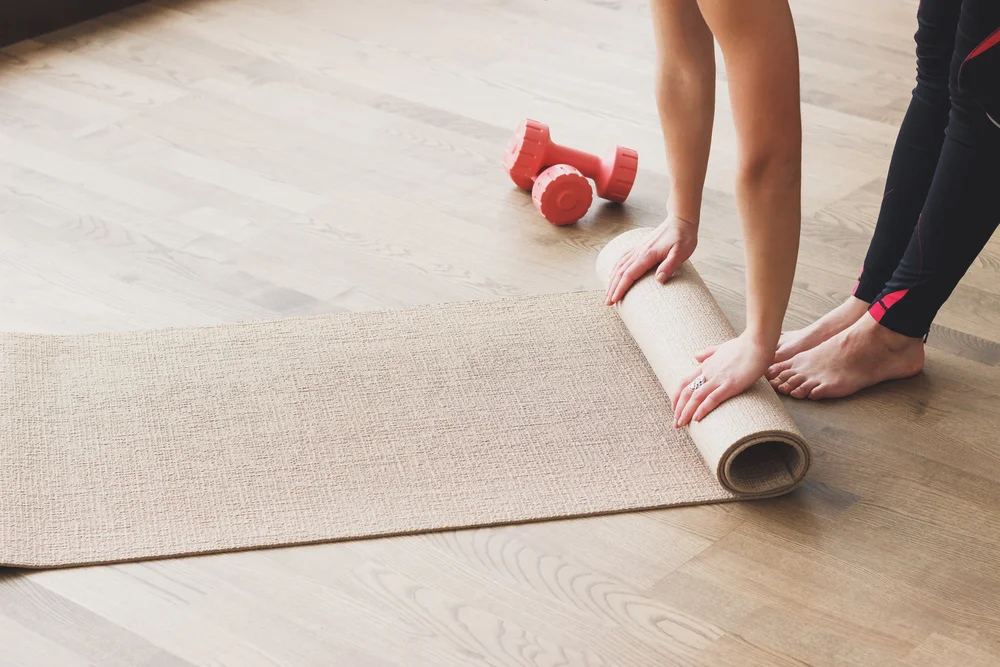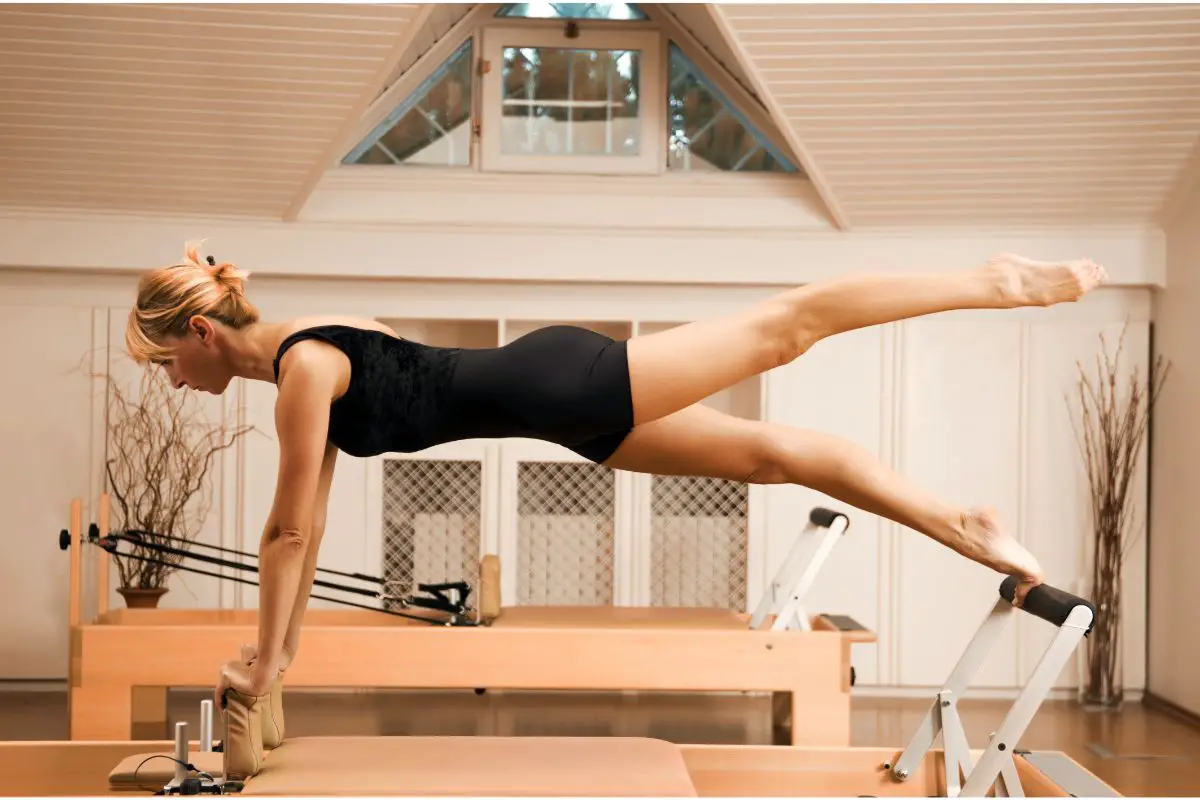Learning

So you’re looking for a new kind of exercise to help to refresh both your body and your mind. You want something invigorating, something to keep you fit.
In the process of your research into a new form of fitness, you’ve stumbled across callanetics and pilates. What’s the difference between the two?
It can be easy to confuse these two forms of exercise, but thankfully we’re here to help. Here are all of the key differences between pilates and callanetics, and which one you should do.
Callanetics
Callanetics is a type of exercise that was created around the mid 1980s.
It consists of a number of exercises that require you to repeat small movements of your muscles and a variety of muscle squeezes.
The exercises are supposed to help to tone and strengthen your body. Some exercises that you may expect with callanetics include kneeling, side lying and supine lying.
In order to perform callanetics exercises, you only need to have an exercise mat. Alternatively, you can also use a ballet barre or a chair.
You can learn callanetics either in person with an instructor or there are also resources available like DVDs and YouTube videos.
In performing callanetics exercises, you will often need to move your body in slow motion and hold position or pulse. This is what helps to improve your muscle strength.
Pilates
Pilates, named after its creator Joseph Pilates, is the most well known exercise out of the two options.
Much like callanetics, pilates is an exercise that’s designed to strengthen the body but it’s particularly good for improving core muscle strength.
Pilates is often compared to Yoga thanks to the intense focus on balance and posture, but it is fundamentally different from Yoga.
Yoga encourages you to hold position for a short while, whereas with pilates you take position and simultaneously move other parts of your body in order to further challenge the core muscles.
Pilates requires an awareness of the body and its movements, meaning that it’s fantastic for mindfulness practice.
Likewise, pilates can also be done with different equipment. You can use things like the Wunda chair, which is a specialist piece of pilates equipment.
One of the great things about pilates is that you can do it pretty much anywhere. You could go out to a pilates studio, for instance.
Alternatively, you can also do it by following an online video from the comfort of your own home, or you could watch a DVD.
What’s the Same?
So what’s similar between these two forms of exercise?
Well to start with, it’s important to have the correct body alignment in both of them otherwise you won’t be able to perform the exercises correctly.
In both exercises it’s important to have the right range of motion.
In addition to this, you don’t need a lot of equipment for either form of exercise. Ultimately, all you really need is an exercise mat, though you can use additional equipment if you wish to.
They’re also both fantastic forms of exercise if you prefer to exercise at home, since you can easily exercise from your own home with a DVD or a YouTube Video.
What’s Different
As already mentioned, both forms of exercise can be done without equipment. With that being said though, you can often get more out of pilates when you use machines in certain sessions.
This is not the case for callanetics, which only requires the use of your body. Your body is all the equipment that you need.
When it comes to pilates, it can sometimes be a lot more challenging when you try to attempt the exercises without the use of the specialist machines.
Machines like the Cadillac or reformer are specifically designed to add the movement or resistance that you need in order to more effectively perform pilates movements.
The other difference comes down to certifications. You can find thousands of pilates instructors out there, whereas there are very few instructors certified in Callanetics.
Which One Should You Do?

Okay, so now that you know the similarities and differences between callanetics and pilates, which one should you choose to do?
The answer to this depends on you and your personal preferences, but here are a few benefits and disadvantages to consider.
Callanetics
First of all, callanetics workouts provide a number of benefits.
Since callanetics encourages you to focus on the connection between your body and mind, it is known for providing practitioners with better mental health.
You may also find that doing callanetics makes you feel more energized and motivated.
Since the exercise is strength based and focuses on the muscles, you may also find that your knee, back, neck and shoulder pain is greatly improved.
It’s basically like a form of natural pain relief, especially if you have stiff muscles.
The main benefit for many people though is that it tones and strengthens the body. If you’re looking for that sculpted looking body, callanetics may just be the ideal exercise for you.
The exercises are also great for posture, balance and flexibility. Plus, there are very few risks of getting injured with callanetics exercises, whether you’re a pro or just a beginner.
Of course, it isn’t without its problems. First of all, the reduced number of callanetics instructors may mean that it’s harder for you to find a class.
In addition to this, if you are looking to improve your core strength then pilates may be the better option for you.
Both exercises improve overall strength, but pilates focuses much more heavily on the core muscles.
Pilates
Pilates is a fantastic form of exercise for a wide variety of reasons.
To start with, it’s a low impact form of exercise. This means that it’s ideal if you struggle with your joints since it doesn’t put excessive strain on your muscles like running would.
You can even perform some exercises lying down, so there’s not a lot of impact on the knees! It’s even been found that it may be useful in easing symptoms of arthritis and fibromyalgia.
Like callanetics, it’s also great at improving muscle strength, but it’s especially effective at improving the core muscles.
It’s great for your balance and flexibility too. You can see major results after as little as just one month of pilates.
On the flip side though, pilates is often better performed when you have the right machines to use.
Sure, you can do it without them but certain exercises will be much harder as a result. It’s also not the best choice if you’re looking to burn a lot of calories either.
Conclusion
Pilates and callanetics are similar in many ways, but they both have their own benefits and shortcomings.
Whatever the case, you can be sure that both forms of exercise will make a massive difference to your life.
If you want better mental health, improved strength and flexibility and so much more, it’s in your best interest to try either pilates or callanetics.
You could even do both! Which one will you choose?




